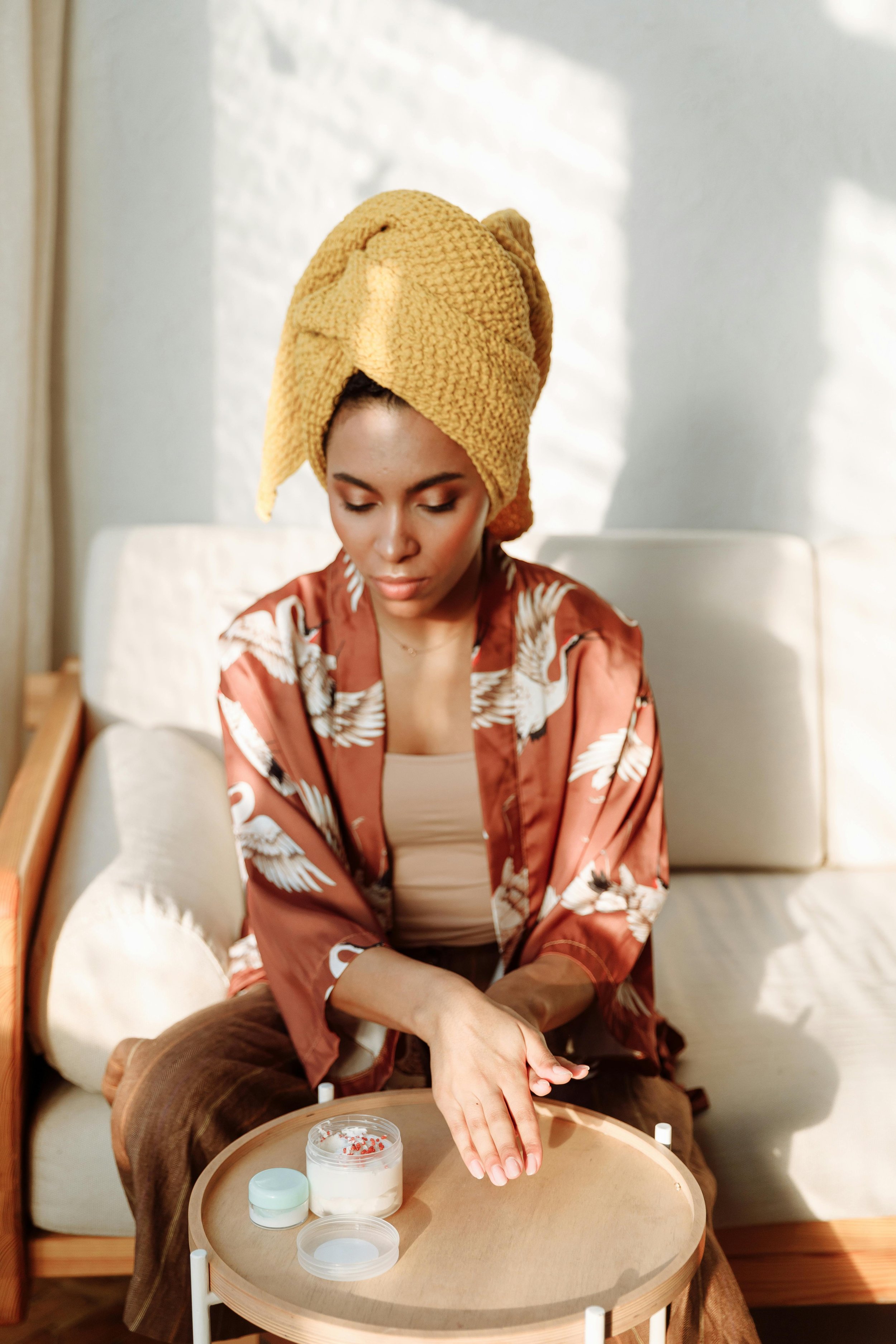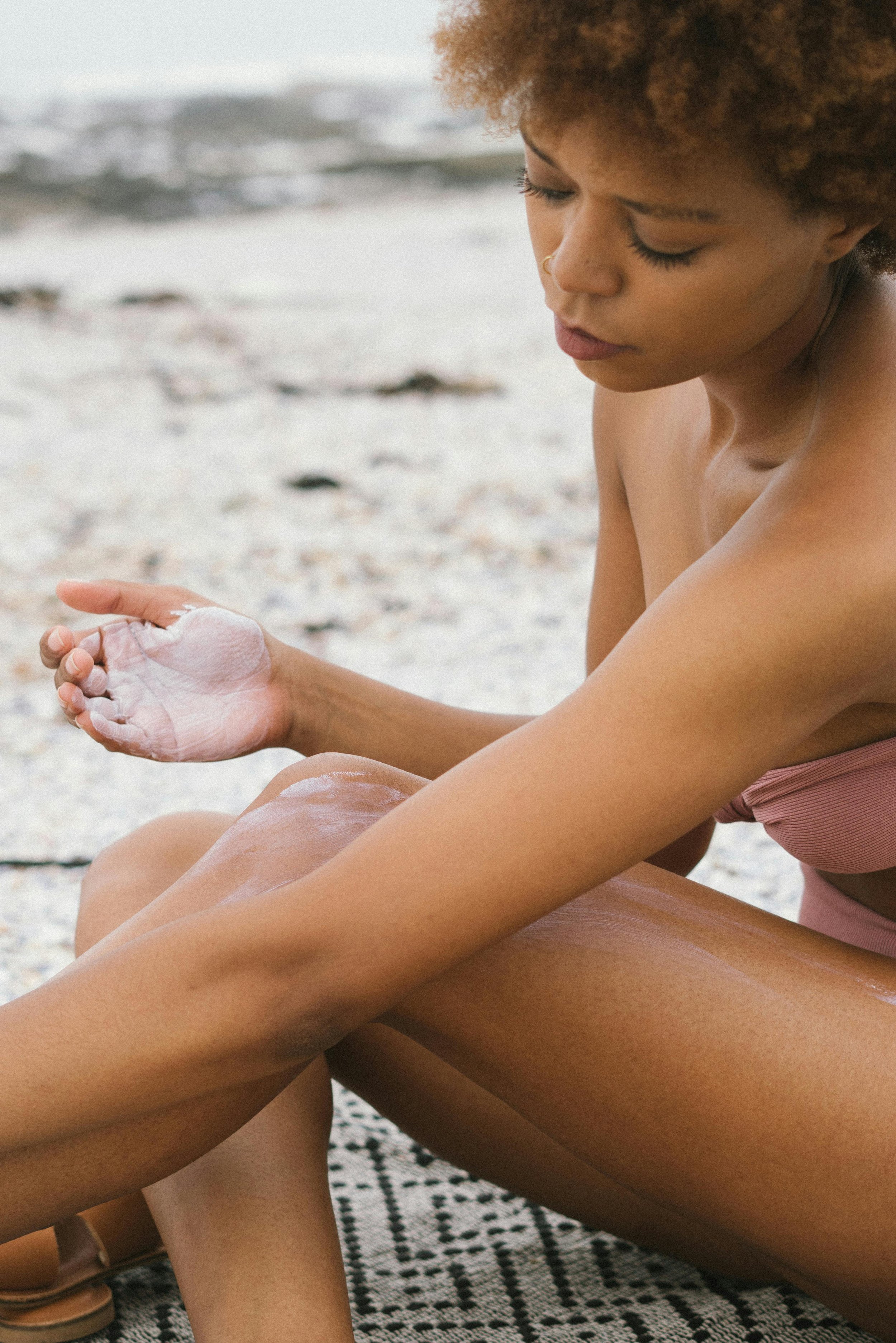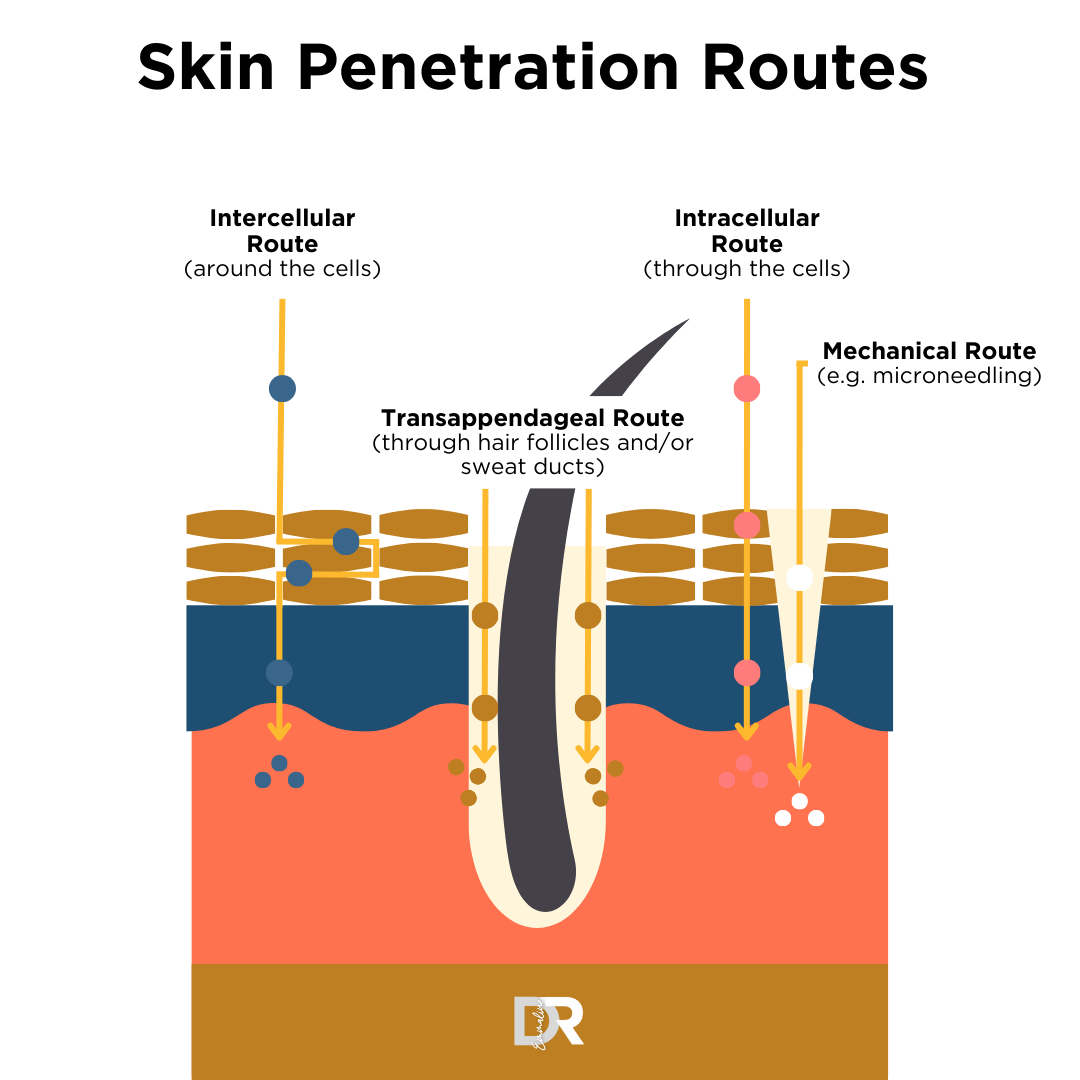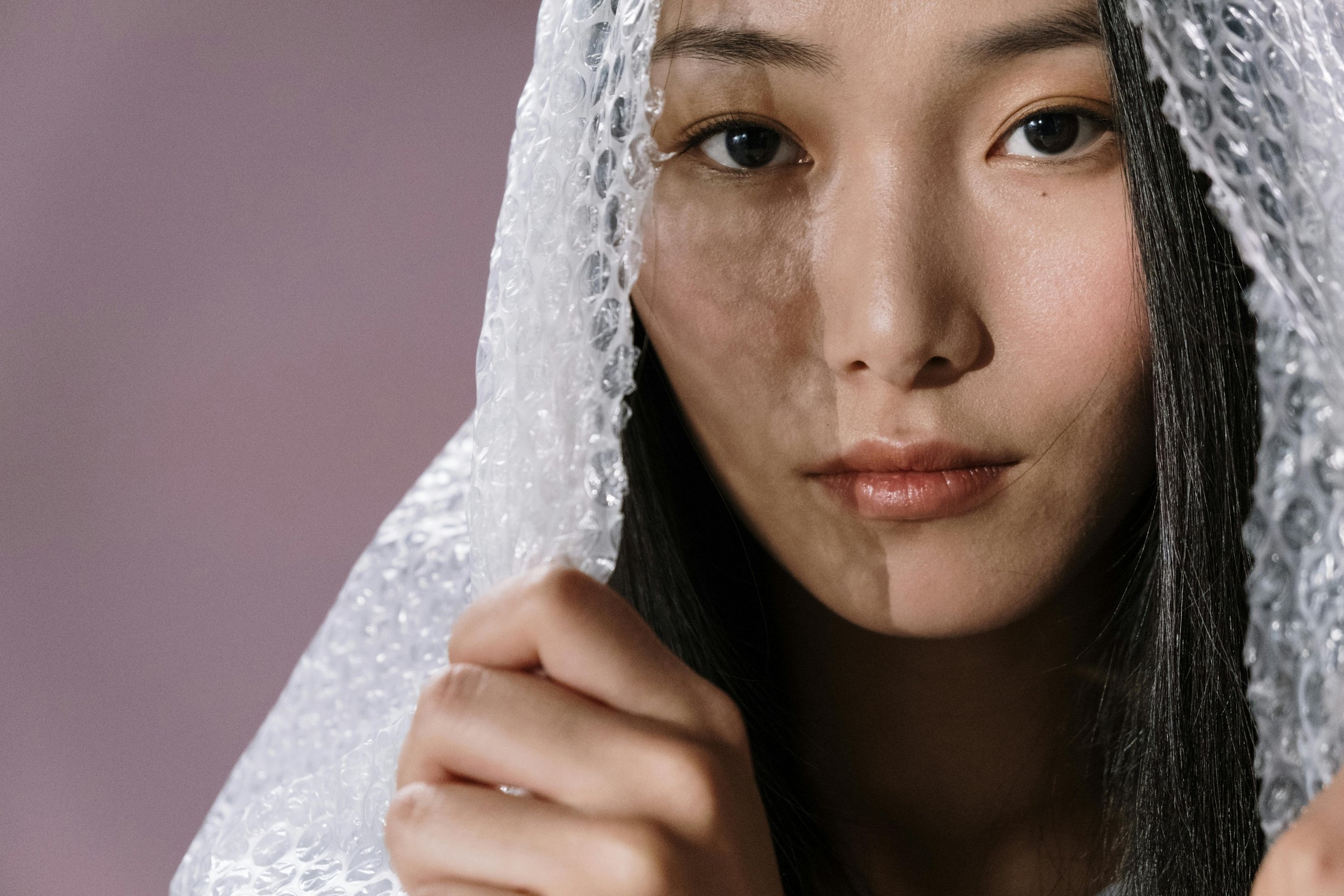East meets West: All about Asian Skincare
This is an article that I have been so excited to write, because it resonates with me. My heritage is half-English, half-Chinese, so I have always been aware that there are slightly different approaches in Eastern versus Western beauty and skin. I’ve become more interested in Asian skincare as time has gone on. This is not only because of my background, but also because Asian skincare is something that I know has a major presence in the beauty world - especially skincare. About 80% of the global skincare revenue was estimated to come from Asian markets last year. But Asian medical-grade skincare lines are not commonly seen in many medical aesthetic clinics in London. The most popular medical-grade skincare products used by aesthetic practitioners here are from North America or Europe.
So what are the broad differences - if any - between skincare lines from Asia and the West. And are we missing a trick here by not using them more?
It’s all evidence-based
There are so many amazing, interesting and innovative medical-grade skin lines out there, so I am always curious to discover more. I just want to clarify that I am only interested in skincare that has research behind it, and I’m not examining alternative or complementary “medicine.”
Unfortunately, I have seen that sometimes Asian products and practices are all lumped under this umbrella, but that is not what I’m comparing anything to here.
That’s not to say that there aren’t traditional ingredients that are used - just that they are used with good reason because someone has looked at the science behind why they work!
Beauty is a big thing in Asia, and the focus has always been on skincare over makeup for most big beauty brands. Consumers in Asia tend to be very discerning and skeptical, brand-loyalty isn’t a big thing, and if there is an amazing new product out here it will get attention.
Final Disclaimer: I am no expert in Asian skincare (yet). I have added the gorgeous Japanese medical-grade skincare line Forlle’d to my clinic skincare portfolio, and been really impressed with the results on my own skin as well as the skin of the first few patients I have used the products with. The use of hydrating toners/lotions and some of the ingredients were new to me, which is what inspired this article as a brief exploration of a new area of skincare.
A (brief) introduction to Asian skincare
The first thing to admit is that it is probably quite inaccurate and unfair for me to use the catch-all term “Asian skincare,” lumping them all together when Asia is not just one thing and there are many different companies and products out there. K-beauty is the most well-known group of products here in the west, but of course there are multiple skincare lines from China, Japan, and multiple other places.
Broadly, then, what comes to mind when discussing Asian skincare? Probably things like sheet masks, essences, and routines with 10-12 steps focusing on light, hydrating layers of product. There are some classics when it comes to what we would stereotype about Asian skincare - the double cleanses, facial oils, facial masks, and exotic ingredients.
However, I think the best way to characterise it as a whole (acknowledging that I’m generalising) is to say that there is also a difference in philosophy.
The philosophy of Asian skincare
Think of a product that you love or that you are impressed with, and how you would describe it to others. I would guess that one of the criteria might be: “you’ll see the results immediately,” “it made such a difference,” “I couldn’t believe it” etc, etc.
As aesthetic healthcare practitioners, we know that true changes to the skin take time and consistency, and a little bit of patience.
We know it, but we still like seeing results. It’s something that our patients often demand, so that they know that the treatment plan we’ve prescribed is working.
After all, we’re all busy, busy people so who doesn’t adore a fast, dramatic result - and a great before and after picture?
Broadly speaking, there is more of a philosophy of prevention, patience, and gentleness in Asian skincare. The focus is on staying away from harsh ingredients, hydrating the skin, and maintaining what you have.
This principle of prioritising gentle skin ingredients can be seen reflected in some of the regulation surrounding skincare ingredients in different Asian countries. For example, in Japan ascorbic acid (aka Vitamin C) is categorised as a “quasi-drug” due to its effects on reducing the appearance of hyperpigmentation. Hydroquinone, which is prescription-only in the UK, is not allowed at all in Japan.
The common products
I just wanted to briefly touch on some of the common products or principles associated with Asian beauty. These are things that are maybe not emphasised as much or used in the same way in Western medical-grade skincare lines.
Obviously there is a big overlap between products and uses within all types of skincare. There are a finite number of vehicles and ways to deliver products to your skin.
Double cleanse
The double cleanse is something that I have seen advocated for more and more, and is becoming a more common practice here. But it has been touted in Asian skincare regimes for a long time, and is usually standard practice.
First Cleansing Step - This is to help to remove any sunscreen, oil or makeup that has accumulated on your skin over the day by breaking it up. In many classic routines you will see micellar water or an oil-based cleanser recommended for this first step.
Second Cleansing Step - This completes the cleaning process by creating a gentle later that will remove any remaining unwanted substances on your skin and leave it clean and ready to receive the next product.This is typically a foaming, water-based cleanser.
I will say whether or not you need to double cleanse depends on your skin type, as well as whether your tend to wear a lot of or heavy make-up. As with everything in skincare, there is no one-size-fits-all.
Hydrating Toner (known as a Lotion in Japan)
Asian toners/lotions are very different from what we would commonly think of as toner. Western toners tend to be slightly more astringent, while Asian toners focus on hydration. The general idea behind them is to help balance the pH of the skin, and prepare it to receive active ingredients in the next steps of your skincare routine. They are light and watery, and should be applied by lightly patting it into the skin, not rubbing it in.
These can be thought of acting as a pre-serum or a very light serum, and some toners/lotions (such as the ones used by Forlle’d) contain charged ions in water. The idea is that this preps your skin and makes anything that you apply to your skin afterwards work better.
Essences/serums
We are quite familiar with the use of serums in many of our favourite medical-grade skincare brands, but they really take center stage for a lot of Asian skincare brands. They are often the primary vehicles for any actives used, and can really be tailored to your specific skin needs offering a great deal of versatility. They are often light, watery, and hydrating layers. Active ingredients used can include more commonly seen ingredients like Vitamin C, niacinimide, and hyaluronic acid. Other interesting ingredients are platinum (a good antioxidant), eggshell protein, and pearl protein.
Moisturisers
Similar to the more familiar medical-grade skincare brands that we use here, there are multiple moiturising options within Asian skincare brands. These include emulsions, which are thinner in consistency. Their creams are thick and often feel extremely luxurious. Facial oils can be added as a final occlusive layer. They don’t tend to be used as a stand-alone moisturiser, just as a final boost for hydration.
For some general information about building (any) skincare routine and layer products, you can see our article about the Anatomy of a Great Skincare Routine here.
Sheet masks
Sheet masks are beloved by many. They are not something that I use myself at the moment and I need to do a bit more research into them, however I didn’t think I could neglect giving them a mention here! The idea behind them is that they are a highly effective delivery vehicle, to be worn for up to half-an-hour. There is definitely an element of enjoyment and self-care in using a sheet mask.
So what is the deal with the 10 plus-step beauty routine?
So having an unnecessarily complicated skincare routine is not what I advocate, but that’s not to definitively say the “classic” Asian skincare routine is inherently wrong. You should always start simple though, and be thoughtful in how you build up.
However, I couldn’t resist the chance to try and wrap my head around these complicated routines and see all the steps involved.
(You can definitely take it or leave it - I just wanted to write all the steps out!)
I wanted to demystify this routine - there’s lots of good stuff here, but being complicated doesn’t make anything inherently good. I love that there are so many interested in Asian skincare and interested in incorporating a diverse set of products into their routines.
At the end of the day, everyone’s skin is different and I do believe there might be needs and desires specific to an eastern Asian clientele that these routines cater to.
Final Thoughts
The Asian philosophy to approaching skincare is slightly different from the Western one. I think they both have equal merit, but also (potentially) might be suited to slightly different skin types or concerns. As long as the products you use are beneficial to your personal skin type and have some evidence behind them, it’s great to branch out to try different things.
For example, for my patients who are in a similar age-range to myself (30s), who have generally taken good care of their skin, and have no major skin issues of note, I find that some of the Asian skincare products are perfect to keep their skin in good condition and to help prevent any premature ageing. However, if I had a patient with moderate acne, rosacea, or hyperpigmentation, I would tend to use a more targeted/ prescription skincare line like Obagi.
At the end of the day, there are so many amazing, interesting, and innovative skincare products out there. As long as they are backed by research, we should be able to explore and expand our repertoire to include brands beyond just the ones typically seen in the States or the UK, that may cater specifically to only Western skin types.
For other aesthetic practitioners, this is potentially an untapped market and an opportunity to expand your skincare portfolio to encompass multiple cultures and types of skin.
Note: If you are interest in trying some incredible medical-grade Asian skincare, Ashley Aesthetics have handpicked the Japanese skincare line Forlle’d for our skincare portfolio.
References
Ando H, Matsui MS, Ichihashi M. Quasi-drugs developed in Japan for the prevention or treatment of hyperpigmentary disorders. Int J Mol Sci. 2010;11(6):2566-2575. Published 2010 Jun 18. doi:10.3390/ijms11062566.
















When it comes to skincare, acids have long been the stars of the show—think glycolic, salicylic, and hyaluronic acids. These tried-and-tested ingredients have earned their reputation for addressing common skin concerns such as acne, wrinkles, and dryness.
But did you know there are lesser-known acids that are starting to make their mark in the skincare world? While some have been used for centuries, others are still emerging in research. In this blog, we’ll introduce you to some skincare acids you may have never heard of, discuss their potential benefits, and help you decide whether they should make their way into your routine.